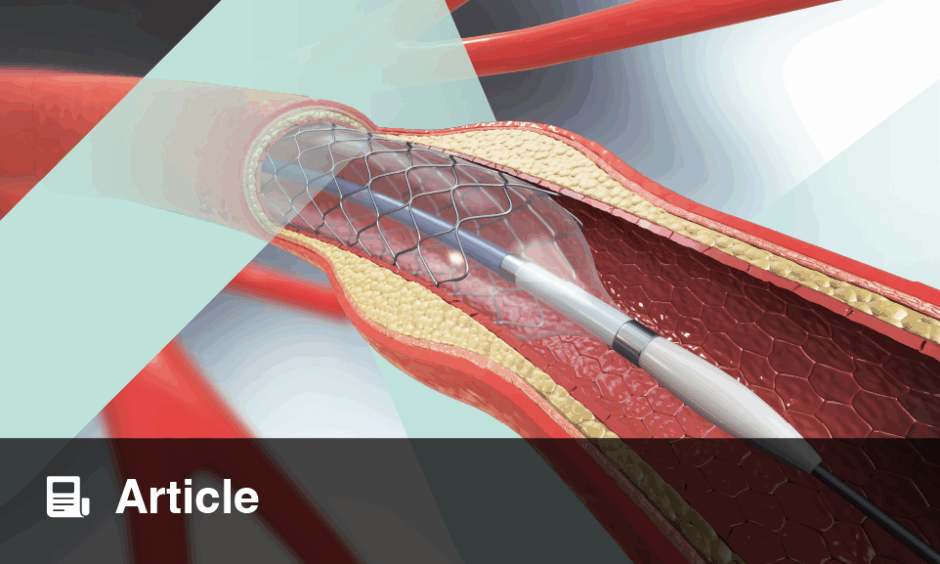ICONIC Parisian landmarks such as the Eiffel Tower and Arc de Triomphe were a sorely missed backdrop for this year’s annual meeting of EuroPCR, the first to be held entirely online. Although attendees at the 31st iteration of this world-leading congress in interventional cardiovascular medicine were unable to stroll the city’s famous boulevards and take in the beauty of the River Seine, the sense of community and collaboration, so typical of previous events, was not diminished. This was underscored by William Wijns, Chairman of EuroPCR, addressing the audience during the Opening Ceremony: “Welcome to PCR. Welcome home.” A similar sentiment was echoed by PCR Vice-Chairman Jean Fajadet: “Hello companions. So happy to meet you again this particular year, and to share with you this new, innovative format of EuroPCR 2021.”
While delivering the inaugural session, Wijns surmised: “We have decided to transform the obligation of digital into an opportunity. In many ways, as a result, I think EuroPCR is bigger than it was in previous years.” Indeed, at the end of the exceptional 3-day event, over 8,000 healthcare professionals had connected to the digital platform for between 45 minutes and 30 hours each. In addition, more than 4,000 questions and contributions were received via the chat functions. Clearly, the transition to a virtual course allowed for greater global participation and fostered a collegiate atmosphere, crucial in enabling PCR to “serve the needs of each individual patient by helping the cardiovascular community to share knowledge, experience, and practice.”
Wijns used the welcome address as an opportunity to highlight the We CARE advocacy scheme: “Fear of COVID-19 is keeping 40% of heart patients with severe disease, such as critical aortic stenosis and acute infarction, away from their doctors. The situation is getting worse when hospital administrators or healthcare authorities are deciding to shut down cardiovascular care all over.”
For this reason, PCR and Stent – Save a Life! launched a joint initiative, akin to previous efforts led by cancer research organisations, to restore patients’ faith in pursuing timely medical care. Fajadet also took a moment to address the ongoing spread of COVID-19: “We are with all of you in the spirt, and we are notably very concerned for you in India and Brazil, particularly. I know I speak, and we speak, for the world community when I say that we send you our best wishes from our hearts.”
In total, EuroPCR 2021 broadcast 120 hours of programmes, without counting the 10,000 videos on demand. Presentations spanned across the speciality and included superficial femoral artery and popliteal interventions, the treatment of coronary artery disease in patients undergoing transcatheter aortic valve implantation, the double-kissing-crush stenting technique for bifurcation percutaneous coronary intervention, transcatheter mitral valve replacement and repair, revascularisation for chronic coronary syndrome and multi-vessel disease, and a review of the current status of renal denervation techniques for the treatment of hypertension.
Media engagement remained strong over the course of the congress, with over 41 million impressions across social platforms using the hashtag “#EuroPCR” alone. In particular, late-breaking trials on the topics of bioresorbable vascular scaffolds, the safety and effectiveness of systemic mild hypothermia as an adjunctive therapy to primary percutaneous coronary intervention in ST-segment elevation myocardial infarction, and the potential role of elective revascularisation plus medical therapy to reduce cardiac death attracted much attention.
The 2021 Andreas Grüntzig Ethica Award was presented to Marie-Calude Morice, Cardiovascular Institute Paris Sud, Massy, France, in recognition of her contribution to clinical research, education, and training in interventional cardiology. Morice was chosen as the recipient of this year’s award for visionary contributions to the field, including identifying an ‘orphan’ group of patients with high bleeding risk and establishing the boundaries of targeted antiplatelet therapy to reduce bleeding without enhancing ischaemic risk.
EuroPCR adapted to these unprecedented circumstances in a truly spectacular fashion by completely rethinking and rebuilding its 2021 congress. In the Closing Ceremony, Fajadet emphasised: “EuroPCR has been, this year, really an important step. I am convinced that there will be a before and an after EuroPCR 2021 in terms of format, in terms of global reach, and engagement of the community. The participants this year were more engaged and more active compared to the previous year, particularly what we saw on the chat.” Despite the virtual nature of this year’s annual meeting, attendees were, in many ways, more together than ever at EuroPCR 2021. The following studies were presented as press releases at EuroPCR 2021 on 18th–20th May 2021.
The FUTURE-II Trial and Implications for Bioresorbable Vascular Scaffolds
RESULTS from the FUTURE-II study, a randomised clinical trial comparing the safety and efficacy of a thin-strut bioresorbable scaffold (BRS) to an everolimus-eluting cobalt–chromium stent (EES), could reignite interest in the use of BRS technology.
The first studies to investigate the use of BRS in percutaneous coronary interventions revealed that such devices could overcome several of the drawbacks associated with metallic drug-eluting stents, including impaired vasomotion. Through the resorption process, BRS were shown to provide a restoration of vascular physiology, which was especially beneficial in the treatment of diffuse coronary artery disease. However, subsequent large-scale randomised trials and meta-analyses noted that polylactic acid-based BRS exhibited a higher rate of target-lesion revascularisation, especially scaffold thrombosis, compared with metallic drug-eluting stents. Consequently, BRS produced from polylactic acid were withdrawn from the market.
Despite this, there is still the need for BRS, which allow for vascular restoration therapy, in the treatment of coronary lesions. Therefore, the FUTURE-II trial aimed to demonstrate the non-inferiority of a newer-generation BRS relative to an EES, with research findings presented by Bo Xu, Fu Wai Hospital, National Center for Cardiovascular Diseases, Chinese Academy of Medical Sciences, Beijing, China, at the late-breaking trials session of EuroPCR 2021.
The study, which enrolled 433 patients with de novo obstructive coronary artery disease across 28 Chinese centres between 2017 and 2019, succeeded in showing that BRS was non-inferior to EES for the primary surrogate endpoint of angiographic late lumen loss at 1 year (0.17±0.27 and 0.19±0.37 mm, respectively; pnon-inferiority<0.0001). The major secondary endpoint of 1-year proportion of covered struts by optimal coherence tomography, which was evaluated in a subgroup of 80 patients, was also found to be similar in the BRS and EES group (99.3% versus 98.8%, respectively; pnon-inferiority<0.0001). Lastly, the FUTURE-II trial investigators concluded that there was no statistical difference in terms of target lesion failure between groups, with a very low rate of events (1.9% and 3.3%, respectively; p=0.37) and no definite or probable device thrombosis.
Going forward, this study has the potential to revitalise the concept of a polylactic acid-based BRS and promote the design of new pivotal trials using this second-generation bioabsorbable device, with a focus on improving physical and mechanical properties.
Cardiac Death Rates Reduced with Combined Revascularisation and Medical Therapy
ELECTIVE cardiac revascularisation and medical therapy are key interventions for the reduction of cardiac death, states a recently developed meta-analysis presented at EuroPCR 2021. Despite the ISCHEMIA randomised clinical trial finding no outstanding contrast between invasive and conservative approaches in patients with chronic coronary syndromes, the cumulative difference in the estimates of cardiac death was notable. Cardiac mortality rates and long-term follow-up were not key influences in the ISCHEMIA trial, however the invasive strategy proved favourable in reducing cardiac death 0.3% at 2 years and 1.3% at 5 years.
Eliano Navarese and team presented results of the meta-analysis that involved a total of 19,806 patients diagnosed with chronic coronary syndromes undergoing elective revascularisation, from 25 randomised trials with the longest available follow-up. The results showed a remarkable 21% risk reduction in cardiac death with revascularisation combined with medical therapy (risk ratio: 0.79; 95% confidence interval: 0.67–0.93; p<0.01), with no major fluctuation across the selected trials. Spontaneous myocardial infarction following the combined medical therapy and revascularisation within the study showed a consequential reduction (risk ratio: 0.74; 95% confidence interval: 0.64–0.86; p<0.01). A meta-regression of this study revealed an interrelation between the reduction in both cardiac death and spontaneous myocardial infarction following the combined strategies.
Additionally, the meta-analysis results showed that within each 4-year increase in the length of follow-up in the available studies, the risk of cardiac death decreased by 19%. A follow-up analysis showed that additional future trials would not contradict the benefit of combined revascularisation and medical therapy on cardiac death. In conclusion, this meta-analysis indicates the benefits of combined elective revascularisation and enhanced medical therapy are complementary and are essential to achieving optimal and long-term prevention of adverse events such as cardiac death.
True Bifurcation Distal Left Main Disease: Single-Stent or Double-Stent Strategy?
PROVISIONAL single-stent versus upfront double-stenting strategy clinical outcomes in 467 patients with true bifurcation distal left main disease, of the EBC MAIN trial, were presented at EuroPCR 2021. This is the second randomised clinical study to address a similar research question; the first was the DKCRUSH-V trial, which indicated better end results with an upfront two-stent strategy: the double-kissing-crush technique. The previous 2018 guideline recommendations from the European Society of Cardiology (ESC) were largely based on the results of single randomised study, the DKCRUSH-V trial; the EBC MAIN trial adds important data for the evolution of this guideline recommendation and clinical practice.
The EBC MAIN trial focused on two main characteristics in the methodology, which should be considered to ensure accurate interpretation of the results. Firstly, all the patients involved in the study had left anterior descending artery and circumflex artery affected by significant disease, confirmed via angiography. Secondly, EBC MAIN did not compare the implantation of one versus two stents; instead, the study compared a provisional single-stent strategy to an upfront assignment to the two-stent technique. There was no clear distinction in the studied clinical outcomes between the provisional single stenting and the upfront use of two-stent technique. Furthermore, 22% of patients from the trial who were initially scheduled for a single-stent treatment eventually underwent the two-stent treatment.
The primary outcome for the trial, 1-year death, myocardial infarction, and target lesion revascularisation, occurred at a rate of 14.7% in the provisional group versus 17.7% in the upfront two-stent group (hazard ratio: 0.8; 95% confidence interval: 0.5 –1.3). The rates of stent thrombosis were 1.7% and 1.3% in patients treated with provisional single stent and upfront double stenting, respectively.
Results from the COOL AMI EU Trial Following Interim Analysis After Trial Discontinuation
THE FINAL results from the pivotal Phase II randomised controlled trial Cool AMI EU, evaluating the safety and effectiveness of systemic therapeutic hypothermia as an adjunctive therapy in anterior ST-segment elevation myocardial infarction (STEMI) undergoing percutaneous coronary intervention (PCI) in comparison to PCI alone, have now been published after the trial was discontinued following an interim analysis. The results of the interim analysis, which was performed after 12 months in the first 111 patients (58 treatment arm, 52 controls), showed significant differences among the treatment groups, which justified the trial’s early discontinuation.
In animal models, infarct size has shown to decrease when therapeutic mild systemic hypothermia is achieved before infarct-related vessel reperfusion; despite promising results in the initial in vivo model and in the early presenters with anterior STEMI, various earlier randomised controlled trials reported neutral effects.
The primary efficacy endpoint of the trial was a 20% relative decrease in mean anterior myocardial infarct size, which was established from a cardiac MRI at days 4–6 post-infarct in the cooling plus PCI. The secondary safety endpoint was established as the combination of myocardial infarction, cardiac death, and clinically indicated target lesion revascularisation at 30 days follow-up.
Marko Noc, University Medical Centre of Ljubljana, Slovenia, presented the interim analysis results at the late-breaking trial sessions of EuroPCR, which showed significant differences between the two groups; there was longer randomisation-to-balloon time (61±21 versus 32±18 min; p<0.001) and total ischaemic time (232±63 versus 188±64 min; p<0.001) in the treatment arm, with similar delays in onset-to-randomisation, the delays of which possibly related to impact on outcomes and not to cooling manoeuvres. Neither the primary nor secondary endpoints saw significant differences between the two groups. The treatment arm saw a significant increase in the incidence of two specified serious adverse events per protocol (cardiogenic shock: n=6 [10.3%] versus n=0 [0%]; p=0.028; and new-onset paroxysmal atrial fibrillation: n=25 [43.1%] versus 2 [3.8%]; p<0.001).
The early discontinuation of the trial limits any statistical power in regard to safety and efficacy in patients with anterior STEMI. While the trial will aid in the design of future clinical trials assessing the effects of systemic hypothermia, more evidence and data will need to be collected to support its adoption.
Does Imaging Guidance Cancel Out Differences in Target Lesion Failure?
MECHANISMS underpinning a potential difference in target lesion failure (TLF) between ultra-thin strut biodegradable polymer sirolimus-eluting stents (BP-SES) and durable polymer everolimus-eluting stents (DP-EES) are unknown. The randomised, multicentre CASTLE study aimed to assess the role played by imaging-guided percutaneous cardiac intervention (PCI) in this difference in clinical outcomes, with findings shared at EuroPCR 2021, 18th–20th May 2021.
Randomised controlled trials of BP-SES have had mixed results, and the variation in trial findings may be related to the use of intracoronary imaging. These stents, which have ultra-thin struts (60 μm) and biodegradable polymer, potentially have reduced vessel inflammation and thrombogenicity compared to DP-EES, however clinical trials have shared mixed findings for TLF rates, with some studies showing lower risk of TLF with BP-SES and other studies having neutral results.
A non-inferiority clinical trial in Japan used an investigator-initiated, single-blinded, randomised approach across 69 centres to assess for the role of imaging-guided PCI. This CASTLE study included patients with acute and chronic coronary syndromes, randomised 1:1 to receive BP-SES (intervention group) or DP-EES (control group) PCI with imaging guidance via intravascular ultrasound or optical coherence tomography. The study involved 12-month follow-up to assess for the primary outcome of TLF, including cardiovascular death, target-vessel myocardial infarction, and clinically driven target lesion revascularisation, with a pre-specified non-inferiority margin of 3.3%.
After approximately 70% of follow-ups were completed, interim results were shared; for the 1,440 patients (BP-SES: 722; DP-EES: 718), there was no significant difference in TLF between the two groups (hazard ratio: 0.59; 95% confidence interval: 0.26–1.36). The dataset included mainly chronic coronary syndromes (85%), with most stent diameters ≤3 mm (66%), and imaging guidance performed in at least 97.5% of cases. There was no significant difference in TLF at 30-day follow-up or at the primary endpoint of 12 months.
Whilst complete follow-up and final results are still outstanding, these interim insights suggest that performing PCI under intracoronary imaging guidance may yield similar clinical outcomes for both BP-SES and DP-EES.
Comparing TAVI and Valve Replacement in Patients with Severe Aortic Stenosis
SCRUTINISING the results of the Evolut Low-Risk trial 2 years on has demonstrated that transcatheter aortic valve implantation (TAVI) may be an effective and less-invasive alternative to surgical aortic valve replacement.
For high-risk patients with severe aortic stenosis, TAVI has proven the superior treatment, but it remains to be seen how helpful it may be for groups with low-risk complications from surgery. The study is expected to change practice to encourage TAVI with a self-expanding supra-annular bioprosthesis, as a result of favourably interpreting the data for the primary outcome of death or disabling stroke.
The trial was of randomised and non-inferiority design, comparing TAVI using self-expanding supra-annular bioprosthesis against surgical aortic valve replacement. Patients included in the study had severe aortic stenosis and a 30-day surgical mortality risk <3%, for a cohort of 1,414. The endpoint outcomes were a composite of death or disabling stroke at 24 months.
The ratio of TAVI to surgery treatments was 730:684 and it was reported that TAVI exhibited superiority for valve haemodynamics and prosthesis–patient mismatch; however, surgery was the better alternative for pacemaker implantation and mild paravalvular leak. In a landmark analysis from 12–24 months, the primary outcome occurred in 1.9% of TAVI and 2.1% of the surgical groups, indicating no adverse catch-up phenomenon in the TAVI therapy group.
Limits exist in the present study: the data do not consider the contemporary cusp-overlay implantation technique used in TAVI that significantly reduces conduction disturbance and need for subsequent pacemaker. Future directives should focus on evaluating differences in impact upon patient outcomes, ideally tracking over a 10-year period.
This study was presented as part of a press release from EuroPCR on 18th May 2021, ‘PCR STATEMENT on the 2-year clinical outcomes from the Evolut low-risk trial,’ put forward by John Forrest.








